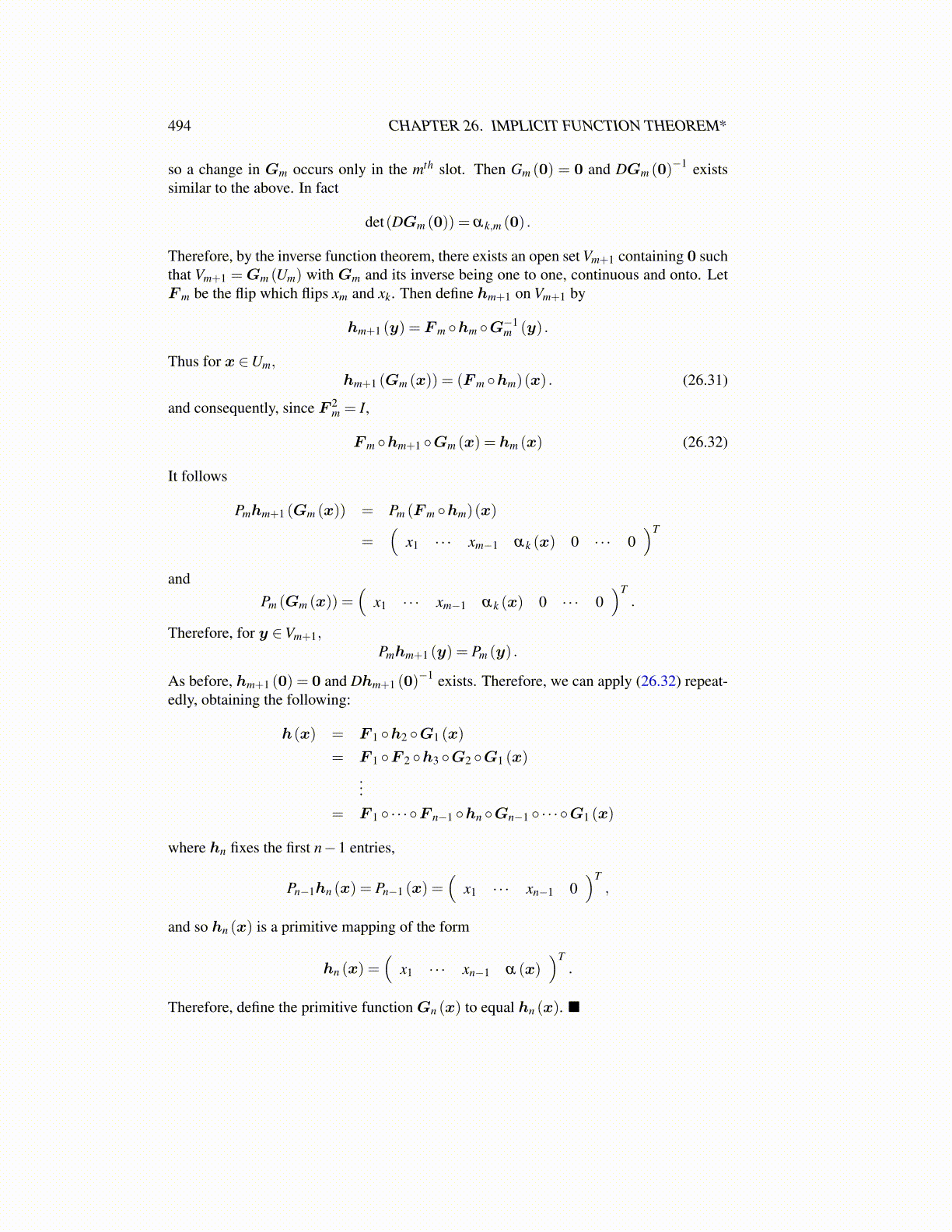
494 CHAPTER 26. IMPLICIT FUNCTION THEOREM*
so a change in Gm occurs only in the mth slot. Then Gm (0) = 0 and DGm (0)−1 existssimilar to the above. In fact
det(DGm (0)) = αk,m (0) .
Therefore, by the inverse function theorem, there exists an open set Vm+1 containing 0 suchthat Vm+1 =Gm (Um) with Gm and its inverse being one to one, continuous and onto. LetFm be the flip which flips xm and xk. Then define hm+1 on Vm+1 by
hm+1 (y) = Fm ◦hm ◦G−1m (y) .
Thus for x ∈Um,hm+1 (Gm (x)) = (Fm ◦hm)(x) . (26.31)
and consequently, since F 2m = I,
Fm ◦hm+1 ◦Gm (x) = hm (x) (26.32)
It follows
Pmhm+1 (Gm (x)) = Pm (Fm ◦hm)(x)
=(
x1 · · · xm−1 αk (x) 0 · · · 0)T
andPm (Gm (x)) =
(x1 · · · xm−1 αk (x) 0 · · · 0
)T.
Therefore, for y ∈Vm+1,Pmhm+1 (y) = Pm (y) .
As before, hm+1 (0) = 0 and Dhm+1 (0)−1 exists. Therefore, we can apply (26.32) repeat-
edly, obtaining the following:
h(x) = F 1 ◦h2 ◦G1 (x)
= F 1 ◦F 2 ◦h3 ◦G2 ◦G1 (x)
...= F 1 ◦ · · · ◦F n−1 ◦hn ◦Gn−1 ◦ · · · ◦G1 (x)
where hn fixes the first n−1 entries,
Pn−1hn (x) = Pn−1 (x) =(
x1 · · · xn−1 0)T
,
and so hn (x) is a primitive mapping of the form
hn (x) =(
x1 · · · xn−1 α (x))T
.
Therefore, define the primitive function Gn (x) to equal hn (x). ■